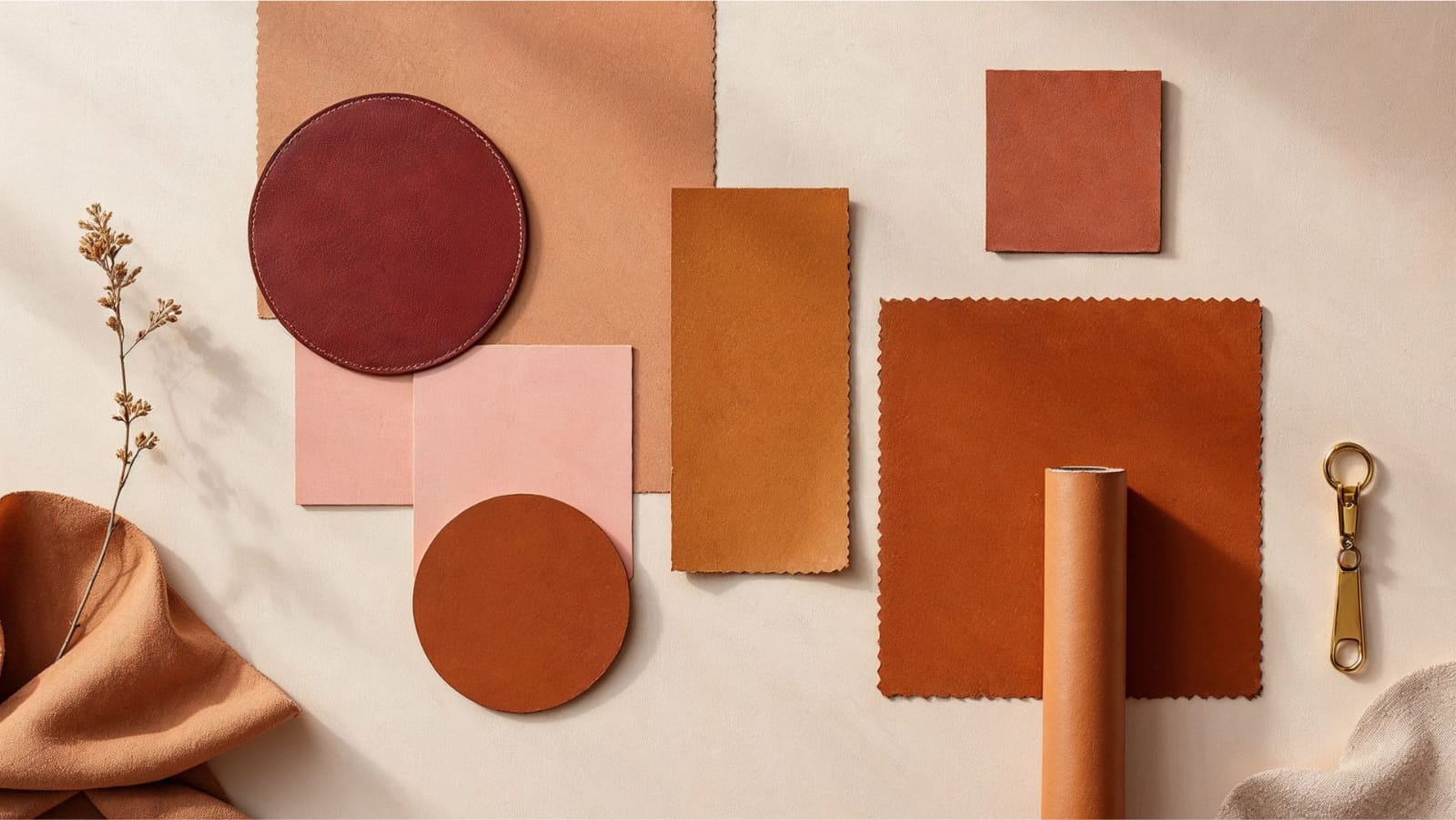
Acme Leather, as a PVC leather manufacturing company, needs a robust quality control system to ensure its products meet the required standards and customer expectations. Here's a comprehensive outline of the quality control measures they should implement throughout their manufacturing process:
PVC Resin:
Verification of the type and grade of PVC resin received against specifications.
Regular testing of melt flow index, density, and other relevant properties.
Plasticizers:
Inspection of the type and quality of plasticizers used for flexibility.
Testing for viscosity, specific gravity, and compatibility with PVC resin.
Stabilizers:
Verification of the type and quantity of heat and UV stabilizers.
Ensuring proper mixing ratios to prevent degradation.
Pigments and Dyes:
Color matching against approved standards using spectrophotometers.
Testing for colorfastness and dispersion quality.
Backing Fabric (Polyester, Cotton, etc.):
Inspection for weave quality, tensile strength, and absence of defects.
Verification of the fabric weight and thickness according to specifications..
Release Paper:
Checking for the correct texture/embossing pattern and absence of damage.
Ensuring proper release properties for the PVC coating.
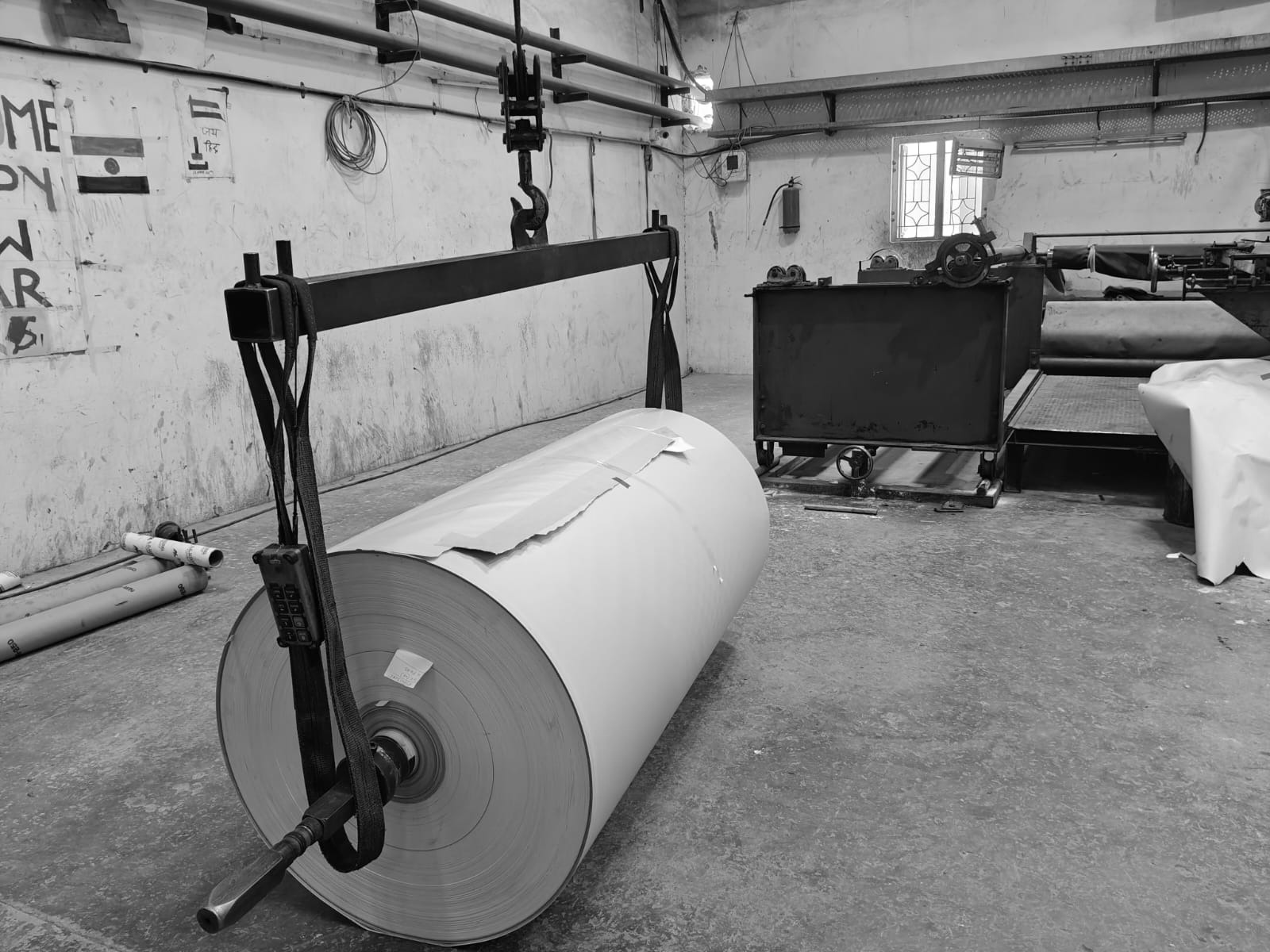
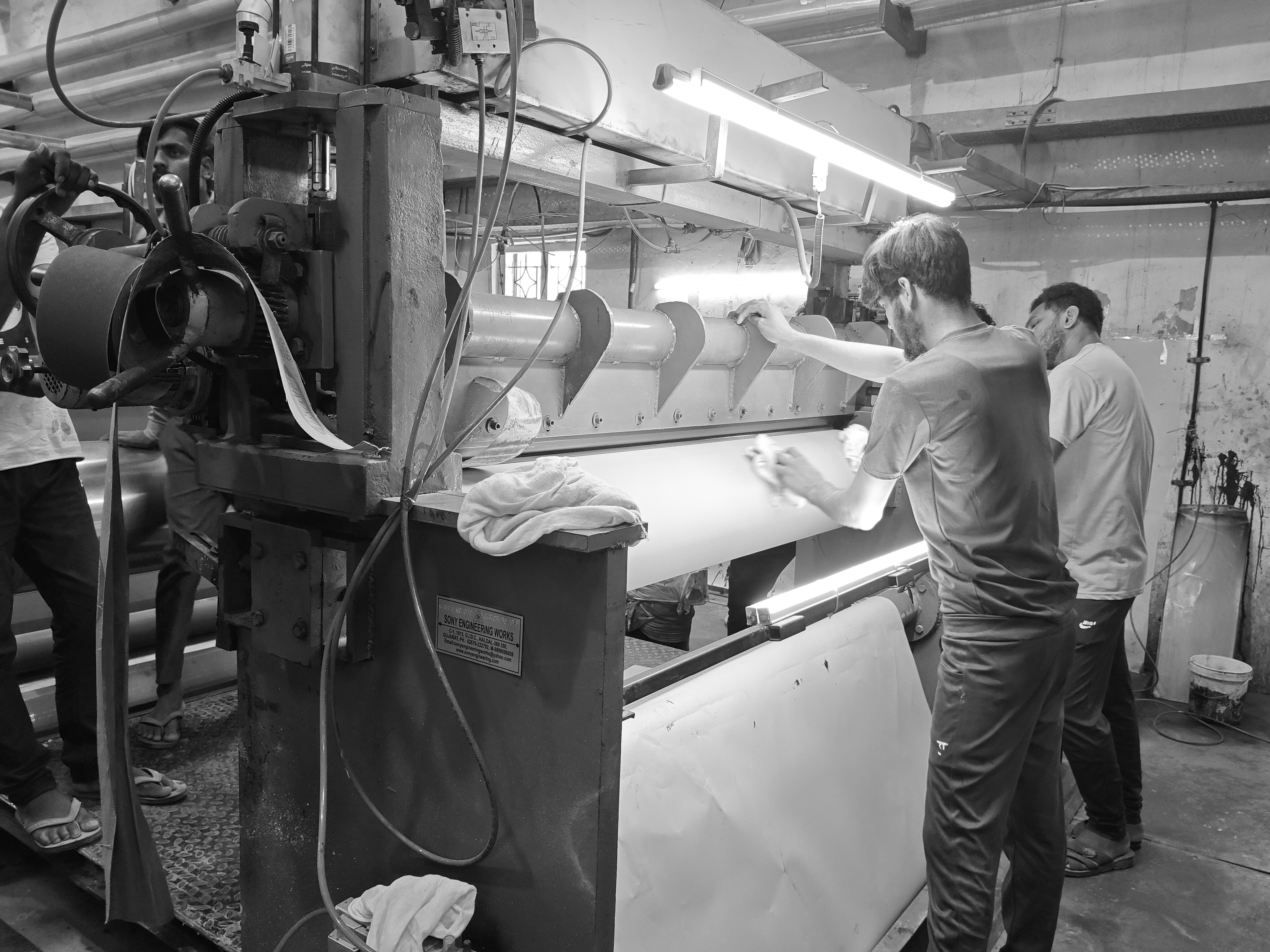
Paste Preparation:
Monitoring and controlling the mixing ratios of PVC resin, plasticizers, stabilizers, pigments, and other additives.
Regular viscosity checks of the PVC paste to ensure proper coating consistency.
Temperature control during the mixing process.
Coating Process:
Continuous monitoring of the coating thickness using online measurement systems.
Visual inspection for uniform coating and absence of air bubbles or foreign particles.
Checking the line speed and oven temperature to ensure proper fusion and curing of the PVC layer.
Embossing/Texturing:
Verification of the embossing pattern and depth against the standard.
Temperature and pressure control of the embossing rollers.
Regular checks for any damage or wear on the embossing rollers.
Lamination (if applicable):
Ensuring proper adhesion between different layers.
Monitoring temperature and pressure during the lamination process.
Curing/Heating:
Precise control of oven temperature and dwell time to achieve optimal physical and chemical properties.
Regular calibration of temperature control systems.
Visual Inspection:
Checking for surface defects such as scratches, pinholes, uneven color, stains, and foreign matter.
Verification of the embossing pattern and overall appearance.
Assessment of the hand feel and flexibility.
Physical Testing:
Thickness Measurement: Ensuring the thickness meets the specified tolerances.
Tensile Strength and Elongation: Testing the resistance to breaking and stretching under force.
Tear Strength: Evaluating the resistance to tearing.
Abrasion Resistance: Assessing the durability against wear and tear using standard testing methods (e.g., Martindale).
Flex Cracking Resistance: Testing the resistance to cracking upon repeated bending.
Colorfastness to Rubbing (Dry and Wet): Ensuring the color does not transfer when rubbed.
Colorfastness to Light: Assessing the resistance to fading upon exposure to light.
Hydrolysis Resistance: Evaluating the resistance to degradation due to moisture and heat (important for certain applications).
Seam Strength (if applicable): Testing the strength of welded or stitched seams.
Chemical Testing:
Composition Analysis: Verifying the percentage of PVC and other components.
Migration of Certain Elements: Ensuring compliance with safety standards regarding the release of harmful substances.
Resistance to Chemicals and Stains: Testing the material's reaction to specific chemicals and staining agents.
pH Value: Ensuring the pH is within acceptable limits.
Dimensional Checks:
Verifying the width and length of the manufactured rolls.
Checking for consistent roll winding.
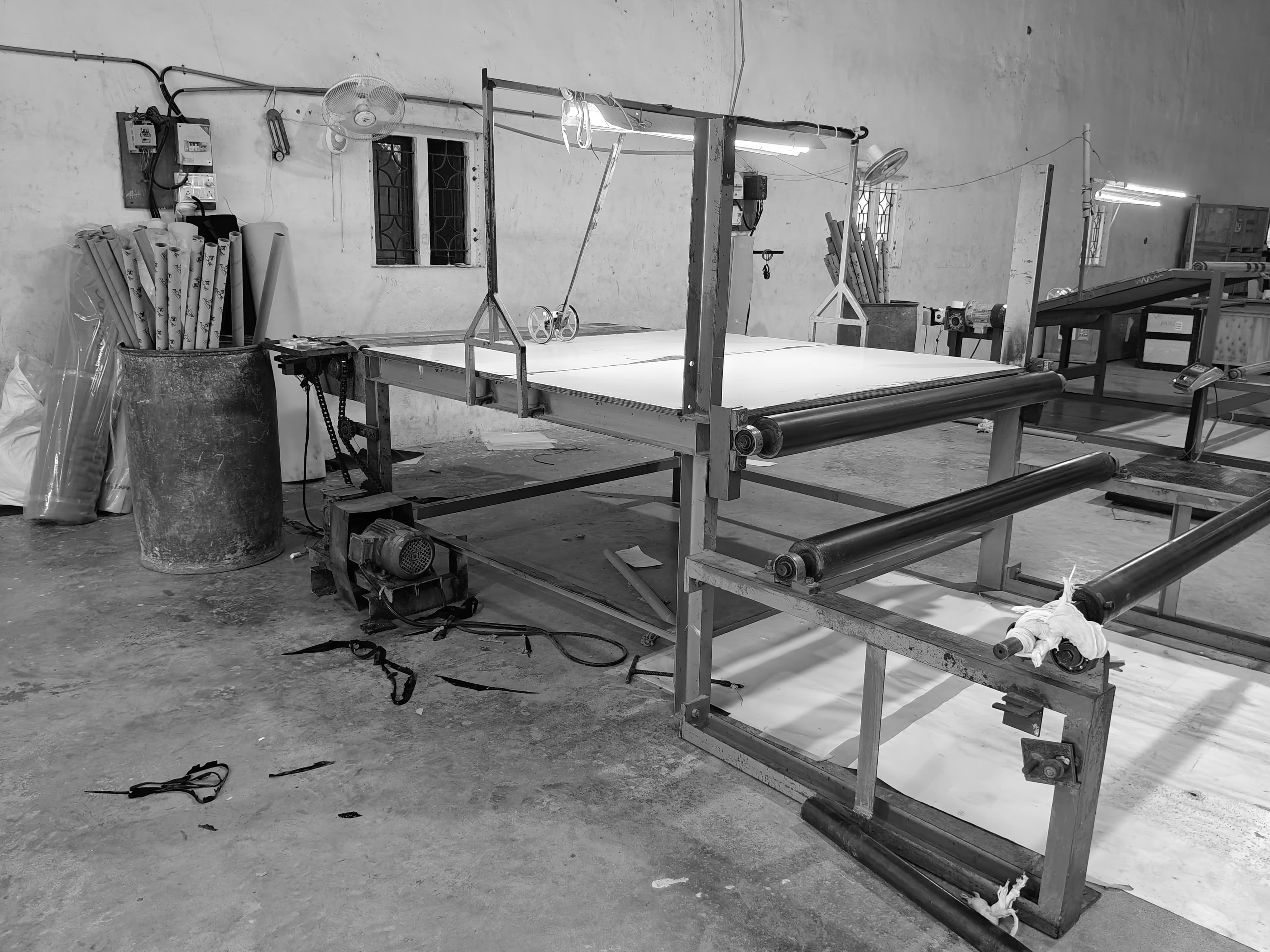
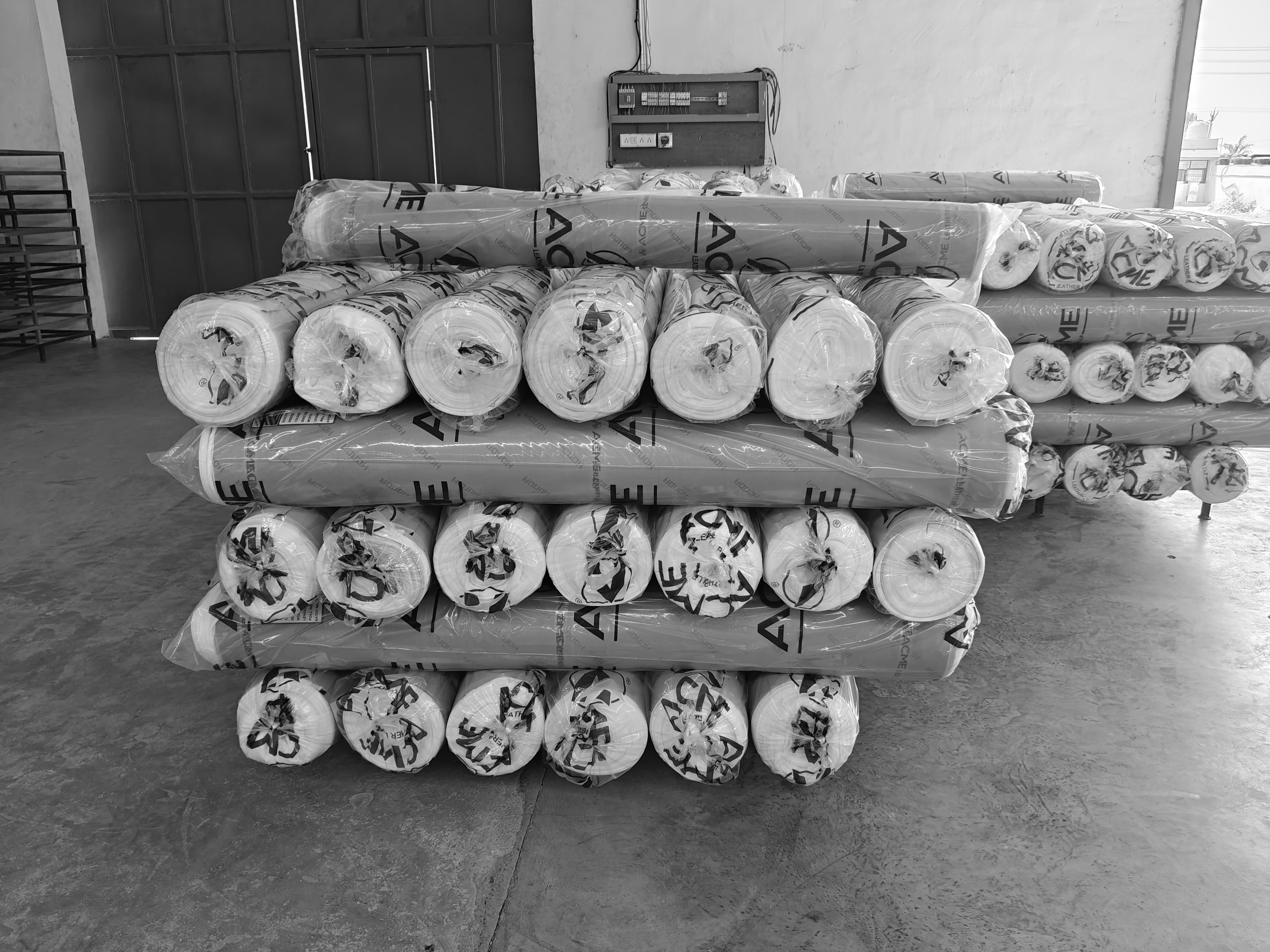
Detailed Record Keeping: Maintaining records of all raw material inspections, in-process checks, and finished product testing.
Batch Traceability: Implementing a system to trace each batch of PVC leather back to the raw materials used and the production parameters.
Certificate of Analysis (COA): Providing customers with a COA that outlines the key quality parameters of the delivered batch.
ISO 9001 Certification: Implementing and maintaining an ISO 9001 certified QMS to provide a framework for consistent quality management.
Defined Quality Policy and Objectives: Establishing clear quality goals and a commitment to quality throughout the organization.
Standard Operating Procedures (SOPs): Documenting all critical processes, including quality control procedures.
Training of Personnel: Ensuring all employees involved in the manufacturing and quality control processes are properly trained.
Internal Audits: Conducting regular internal audits to assess the effectiveness of the QMS and identify areas for improvement.
Corrective and Preventive Actions (CAPA): Implementing a system for addressing non-conformities and preventing their recurrence.
Customer Feedback Management: Establishing a process for collecting and analyzing customer feedback to identify areas for product and process improvement.
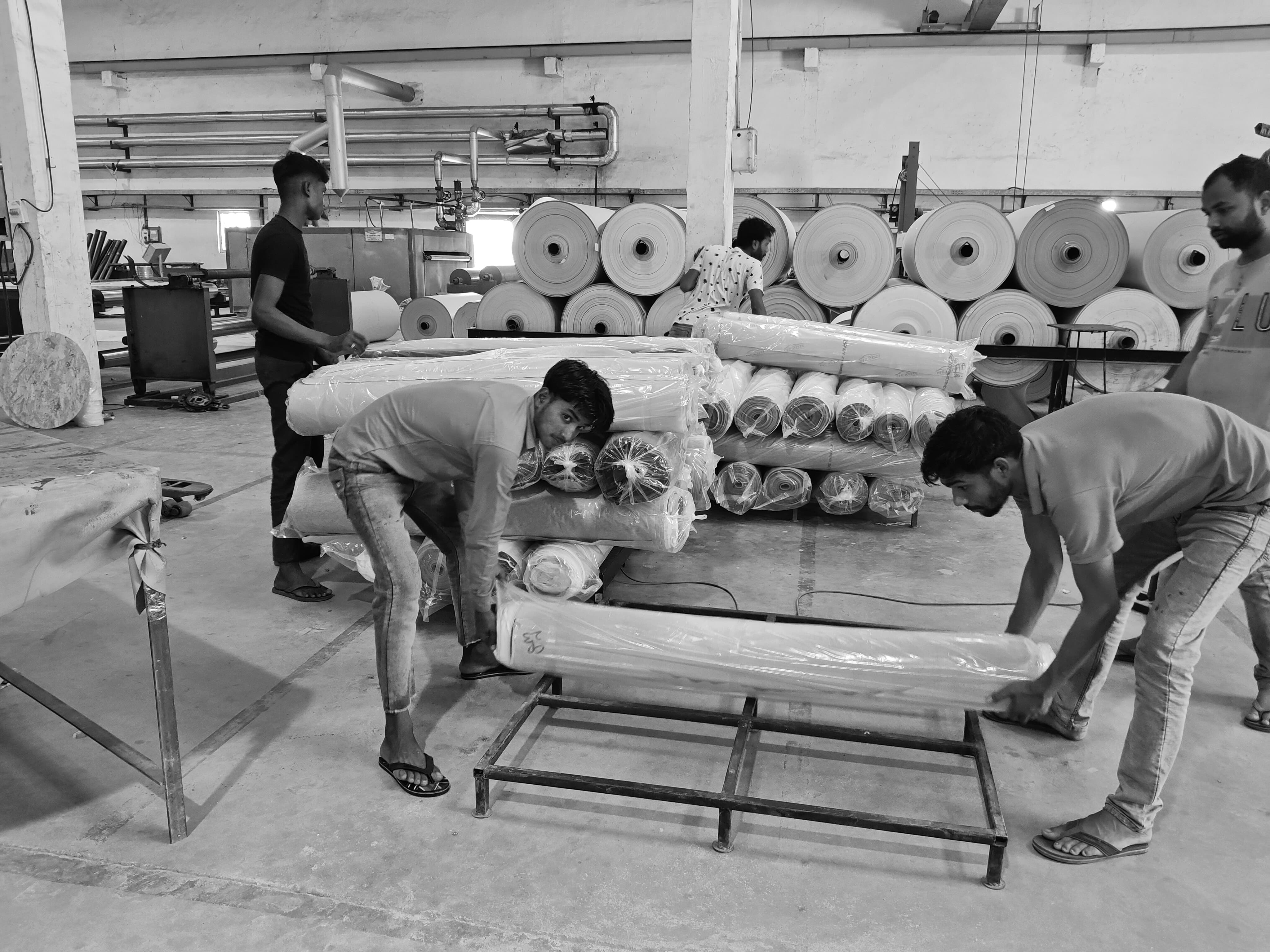
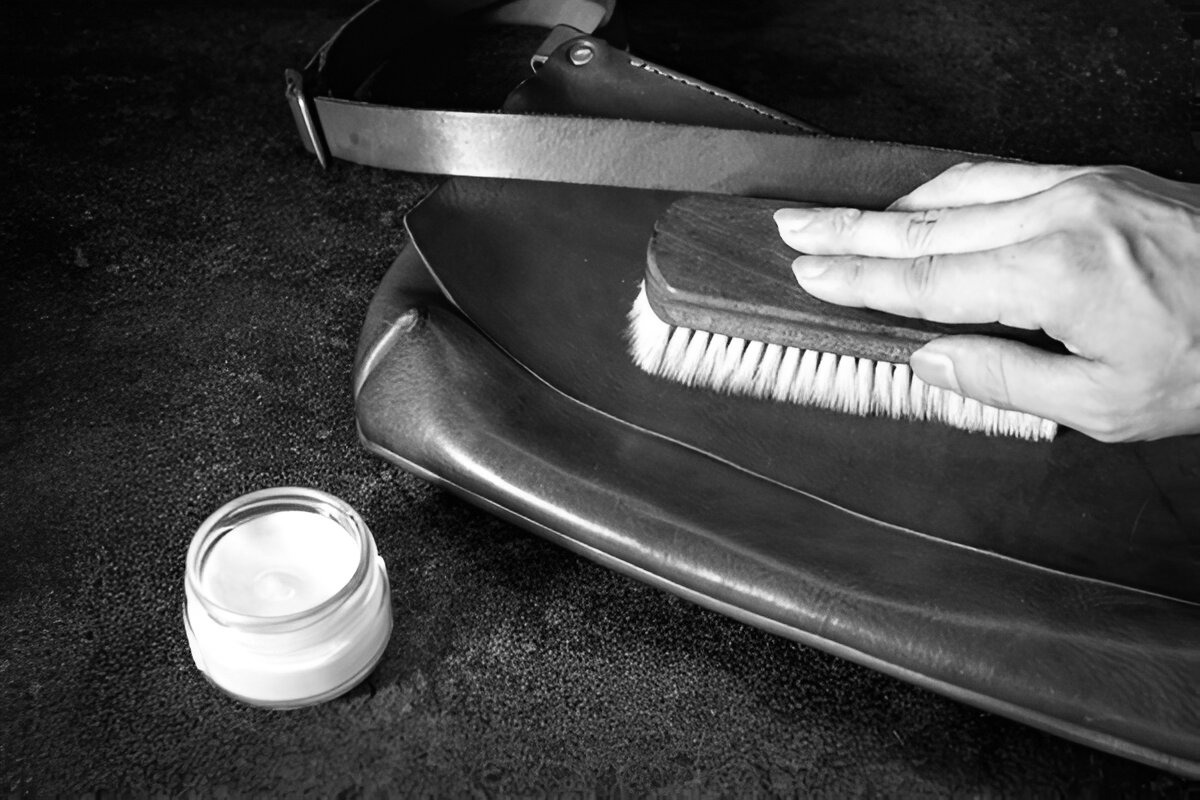
Regular calibration of all testing and measurement equipment to ensure accuracy.
Implementing a preventive maintenance schedule for all production machinery to minimize downtime and ensure consistent quality.
Certificate of Analysis (COA): Providing customers with a COA that outlines the key quality parameters of the delivered batch.

Identify Target Markets and Applications: Tailor the quality control parameters to the specific requirements of the industries Acme Leather serves (e.g., automotive, furniture, fashion). Customer-Specific Requirements: Ensure that the quality control process can accommodate specific quality requirements requested by individual customers.
Sustainability Aspects: If Acme Leather emphasizes sustainability, incorporate quality checks related to recycled content or eco-friendly production processes. By implementing these comprehensive quality control measures, Acme Leather can ensure the consistent production of high-quality PVC leather, build customer trust, and maintain a strong reputation in the market. Continuous improvement and adaptation of the QMS based on data analysis and customer feedback are crucial for long-term success.
From start-ups to global brands, we craft the world’s finest leather goods. Please contact us for more information and discover how we can bring your vision to life.
Get in Touch